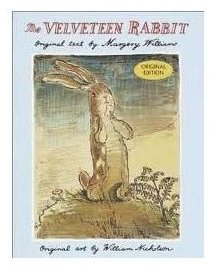Creative Writing: Have Students Write the First Chapter of a Juvenile Book
Help high school students explore their creativity with a project in which they create the first chapter of a book for children.Most teenagers remember what their favorite books were when they were young. They will enjoy a project that allows them to use their
creativity and write a unique book chapter that will entertain children.
To start this lesson, read students an excerpt from a book for children. One great book to use is T__he Velveteen Rabbit. This book describes the quest of a tattered old rabbit to become “real” and be loved.The story starts out this way:
“There was once a velveteen rabbit, and in the beginning he was really splendid. He was fat and bunchy, as a rabbit should be; his coat was spotted brown and white, he had real thread whiskers, and his ears were lined with pink sateen.”
- Discuss the tone of the introduction to the first chapter and the imagery used with the class. Ask students if they like stories that begin with the notion of “once upon a time,” and ask them to tell why or why not.
- Ask volunteers to explain if this introduction catches their interest or not. Tell them to give specific reasons why they like or dislike the passage.
- Then make a list on the board of genres of books for children. Ask students to volunteer information about which genres of books they liked when young. The list could include such genres as educational, scary, humorous, rhyming, adventure books and so on.
- Ask students to create an outline for their book. The outline should contain the names of the main characters and several details about each character, at least 3-4 main plot events, details about the setting of the story, and a sentence or two describing the theme of the book.
- As students are creating their outlines, circulate the room to give feedback. Let students talk among themselves about their books as they are creating an outline. Often students will find it easier to be creative if they brainstorm ideas with one another.
- Once outlines are done, ask volunteers to discuss their story ideas with the class.They may also ask the class for feedback about their story idea and characters.This project is one is which peer-editing and feedback is very helpful to the students.
- Put a list of literary techniques on the board. Tell students they should use at least two of the techniques in the opening chapter of the book. Literary techniques they may use include are rhyme, repetition, hyperbole, imagery, similes, and metaphors or other literary techniques of their choice.
- Then have students start to write a first chapter of a book for children. Remind them to introduce the main character quickly in the story and to use imaginative language to draw in the reader’s interest.
- Give them one class period to write the first chapter in class. Then the next day use part of the period for peer editing of the chapter draft. Then assign continued writing and editing for homework.
To assess student performance on this project, grade the chapter students created based on creativity, use of literary techniques and overall writing skill.Give a participation grade for students who participated in discussion about the sample book as well. If you have a child, you can let your child pick a winner, and give the winner a small prize or bonus points.
Source:“The Velveteen Rabbit”by Margery Williams. Avon Books, New York, New York, 1975.
